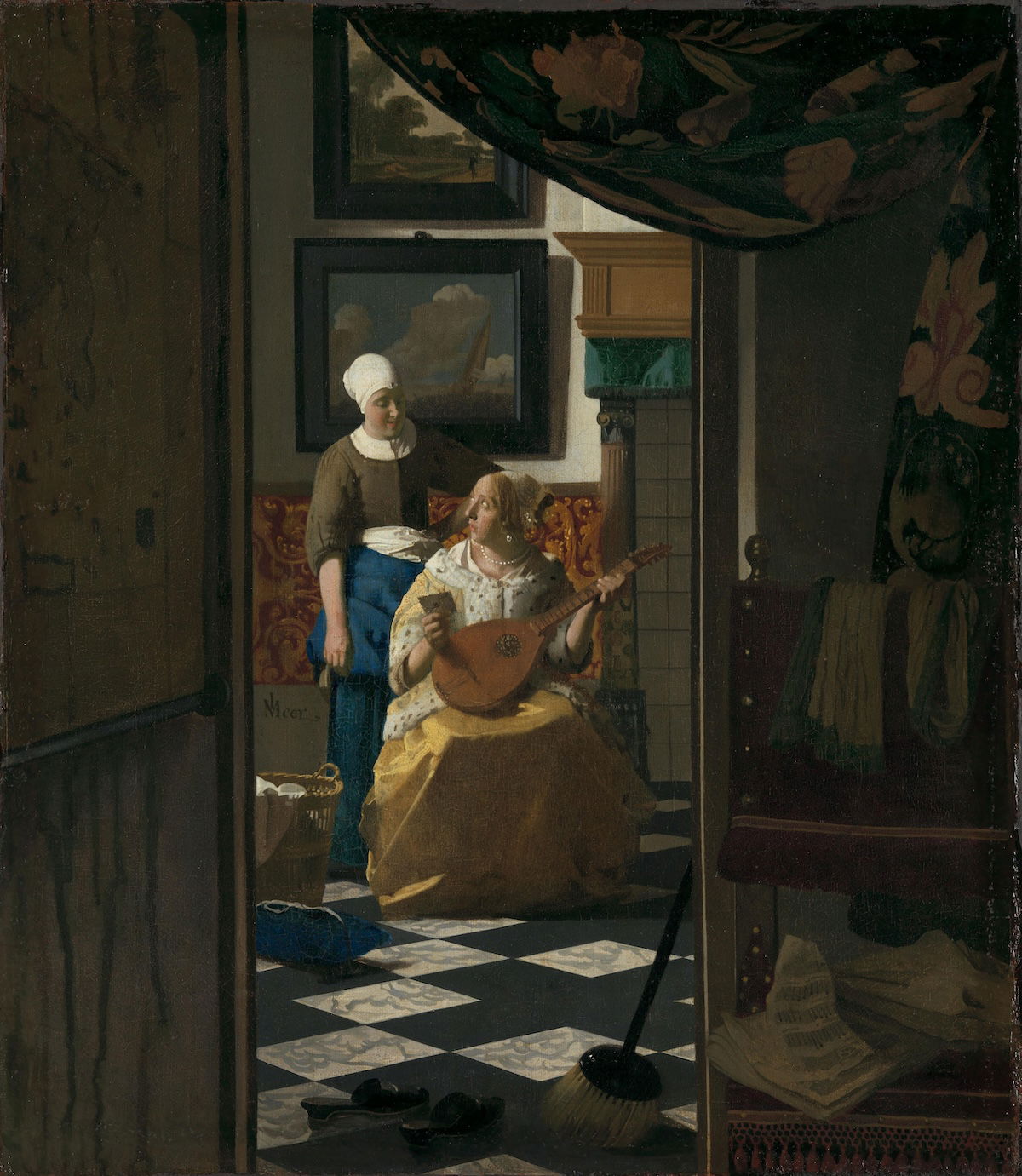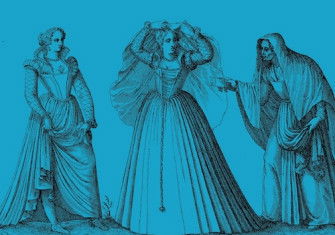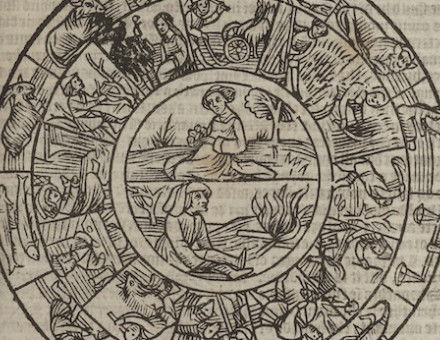‘I Humbly Beg Your Speedy Answer’ by Mary Beth Norton review
‘I Humbly Beg Your Speedy Answer’: Letters on Love and Marriage from the World’s First Personal Advice Column by Mary Beth Norton reveals the 17th-century origins of the agony aunt.

Pleas for advice seem to be everywhere these days, from the pages of long-established ‘agony aunts’ like ‘Miss Manners’ and ‘Dear Prudence’ (with a rotating cast of advisers behind them) to specialised columns on parenting, money, jobs, flatmate disputes, and more. House and Garden’s ‘Fiona’ will tell you what to do if your husband’s family heirlooms do not match your decorating aesthetic, and it is surely only a matter of time before this magazine begins addressing its readers’ history-related dilemmas.
Then there are the viral screenshotted posts from Reddit and elsewhere, demonstrating the depths of human pettiness and depravity in all manner of situations. In their case, the focus is not so much on advice as on the debates which ensue between commenters. The fundamental question, am I being unreasonable?, implies a normative standard of reasonable behaviour that the resulting discussion often disproves.
According to I Humbly Beg Your Speedy Answer, all of this began in the late 17th century with the publication of the Athenian Mercury. A broadsheet appearing twice a week between 1691 and 1697, it consisted entirely of answers to anonymous reader queries sent in by the new medium of the penny post. Sold by ‘Mercury-women’, the sheets would be read and discussed in coffeehouses before being compiled into omnibus volumes, and then anthologised in book form as The Athenian Oracle (1704).
The authors were presented as a secret but authoritative ‘Athenian Society’ of experts, proclaiming ‘behind the scenes sit mighty we / nor are we known nor will we be’. An accompanying illustration showed a panel of 12 bewigged, robed men like a jury or a Last Supper, with desperate readers passing letters up to them: ‘help help noble athenians’, reads a speech bubble from one. In fact, the respondents consisted of the Mercury’s enterprising printer John Dunton (who would publish an autobiography detailing his Life and Errors in 1705) and his two brothers-in-law, who between them boasted a wide but scattershot knowledge of mathematics, science, law, and religion.
About two-thirds of the queries answered in the Mercury were of a factual nature, more ‘Ask Jeeves’ than ‘Dear Prudence’. What is the circumference of the Earth? Is tobacco good or bad for you? Why do dolphins follow ships? What is the best poem ever? But others concerned more intimate dilemmas faced in love, courtship, and marriage. And while the coffeehouse audience was male, the Athenian Mercury soon began to field questions from women, opening itself up to ‘the ingenious of either sex’. There were special ‘ladies’ issues’ dealing with amorous topics and even a short-lived spinoff titled the Ladies Mercury, the first periodical aimed wholly at women.
Selected and briefly introduced by Mary Beth Norton, I Humbly Beg Your Speedy Answer compiles such ‘personal advice’ questions from the Athenian Mercury under six loose categories. Unfortunately, Norton’s practice of silently rewording sentences and modernising language means that it cannot be used as a scholarly text. But it does make for amusing casual reading, shedding light on both early modern social mores and things that have remained stubbornly unchanged.
Then as now, the advice often came with a heavy dose of idiosyncratic judgement. A young man who has slept with a woman and then pretended they were married is greeted with: ‘Truly, sir, a fine piece of work!’ – though, if his ‘generosity’ will not move him, he is advised not to ‘make her a more honorable whore by marriage’. Adultery is always expressly condemned, but one who is beloved by two ladies who are open to sharing is told to ‘try them out first’ before choosing which to wed.
While some of the questions feature extended scenarios (sometimes dubiously presented as happening to a ‘friend’), others are more theoretical, answered in brief and often surprising ways. On whether two women can love each other ‘as passionately and constantly as if the love were between different sexes’, the Athenians say yes to the constancy but no to the passion – ‘unless they are a man turned into a woman’. A gentleman beset by lust is advised against resorting to castration, since it may not work and might kill him.
Throughout, Norton operates on the assumption that all queries sent to the Athenian Mercury were genuine, representing the voices and concerns of actual readers whose interest in personal matters and mix of genders had initially taken Dunton and his colleagues by surprise. She does note that, even at the time, they were occasionally charged with ‘making it all up’. In fact, while some of the letters have been traced as authentic, most of the spurned lovers and ladies with euphemistic (and oddly similar) tales of ravishment were probably no more real than the Athenian sages.
Does this matter? Nowadays, more outré or obviously one-sided advice scenarios are commonly dismissed as ‘engagement bait’; AI can be used to cobble together humanity’s most rage-inducing encounters into endless variations. There is also a fashion for reframing classic fiction plots in the language of Reddit posts (‘I told a woman that I thought her family was awful while proposing; AITA?’) or sneaking them in to be answered by real columnists as a hoax. Indeed, the same may have befallen the Athenian Mercury – after receiving a fraught story of suicidal passion, they note that there was a published romance ‘much like it’.
Yet the influence may also have flowed the other way. The questions and answers in the broadsheet demonstrated that there was an audience eager to hear about ordinary people’s experiences of love and courtship, with all the resulting drama and moral conundrums, and that only a thin veneer of reality was required to make readers care. As such, Dunton’s ‘question project’ likely contributed to the rise of the novel in the 18th century. Often presented as letters written by characters in various forms of amorous distress, these stories succeeded by inviting readers to cast their own judgement.
- ‘I Humbly Beg Your Speedy Answer’: Letters on Love and Marriage from the World’s First Personal Advice Column
Mary Beth Norton
Princeton University Press, 216pp, £20
Buy from bookshop.org (affiliate link)
Natasha Simonova writes on 18th-century literature.






